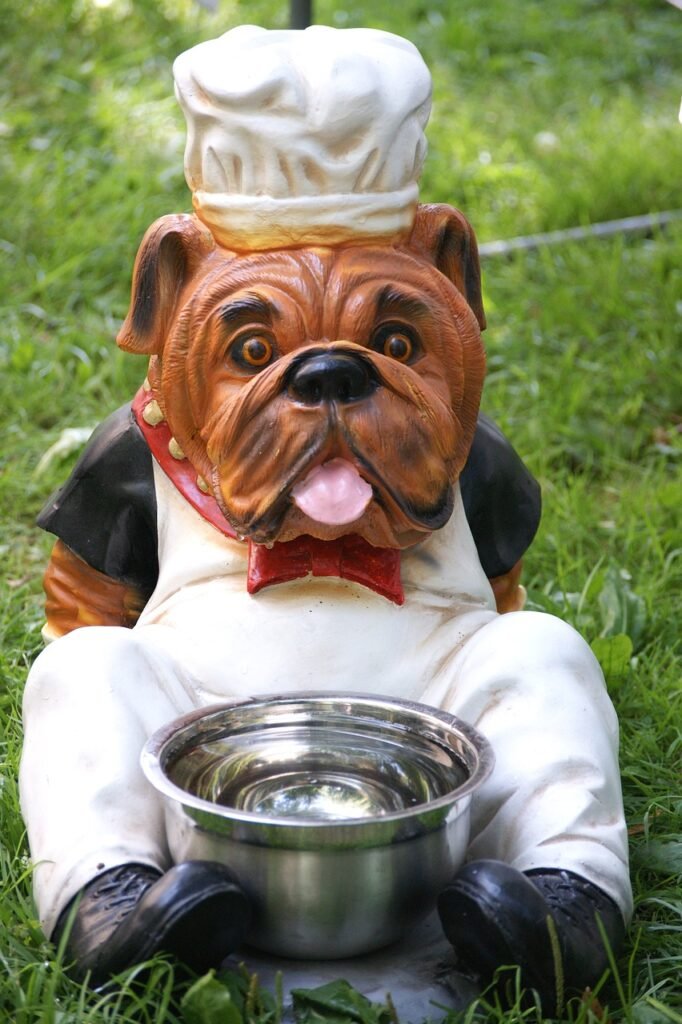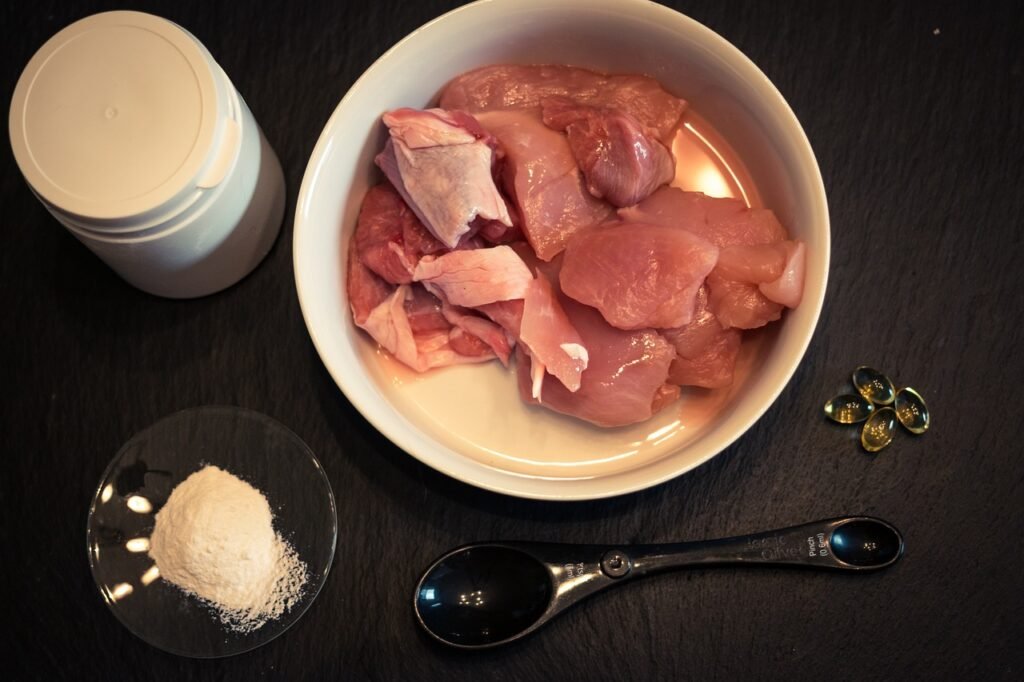Intro
When it comes to providing a budget-friendly senior dog raw diet, many pet owners may feel overwhelmed by the thought of creating comprehensive raw dog food menus. However, with a little planning and creativity, it is possible to offer affordable raw meal options for aging dogs of all sizes. In this blog post, we will explore how to create three different weekly menus tailored to small, medium, and large senior dogs without breaking the bank.
Understanding the Nutritional Needs of Senior Dogs

Embarking on the journey to optimize the diet of our senior canine companions necessitates a deep dive into their unique nutritional landscape. Aging dogs, much like humans, encounter a shift in their bodily functions and metabolic rates, which in turn, demands a recalibration of their nutritional intake. Their diet must be delicately balanced to not only satiate their hunger but to rejuvenate their aging cells and support their diminishing vitality.
One pivotal aspect to consider is the delicate balance of protein. While too little may lead to muscle loss, an excess could overburden their kidneys. Thus, choosing high-quality, easily digestible protein sources becomes paramount. Incorporating omega-3 fatty acids is another critical strategy; sourced from fish oils or flaxseed, these nutrients are champions in combating inflammation and bolstering cognitive functions, both common concerns in senior dogs.
Moreover, the importance of glucosamine and chondroitin cannot be overstated. These compounds are the building blocks for cartilage, offering a cushion for aging joints and aiding in the battle against arthritis. Equally, dietary fibers play a significant role, assisting in maintaining a healthy digestive system, which can often become sluggish in older dogs.
In addition, hydration is a key component often overlooked. Senior dogs may be less inclined to drink adequate water, making it essential to include moisture-rich foods within their diet to ensure hydration and support kidney health.
Navigating the nutritional needs of senior dogs is akin to crafting a delicate tapestry, each thread representing a vital nutrient that, when woven together, promotes a harmonious and healthy life. By embracing this approach, we pave the way for our beloved companions to age gracefully, supported by a diet that caters to their evolving needs.
Benefits of a Raw Diet for Aging Canines

The transition to a raw diet opens up a myriad of benefits that seem to specifically cater to the needs of our aging canine friends. This dietary shift is observed to enhance digestion significantly. For senior dogs, this means a more efficient absorption of essential nutrients, an aspect that becomes increasingly crucial as their bodies become less forgiving with age. The raw diet’s naturally high moisture content also promotes better hydration, indirectly supporting kidney function and overall health.
Furthermore, the inclusion of unprocessed, fresh foods in their meals leads to a noticeable improvement in skin and coat health. Owners often report a lustrous shine and reduced skin flakiness, which not only contributes to the aesthetic appeal of the dog but also to their comfort and health. Energy levels, a concern for many guardians of older dogs, see a revival, with many senior dogs displaying a zest for life reminiscent of their younger years.
Notably, the raw diet’s impact extends to mitigating the risk of common age-related ailments. The optimized balance of nutrients helps in maintaining an ideal weight, thereby reducing the stress on aging joints and the potential for obesity—a significant factor in chronic diseases. The natural diet, rich in essential fatty acids and lean proteins, supports muscular maintenance and joint health, potentially easing the discomforts of arthritis.
Embracing a raw diet for senior dogs is more than a nutritional choice—it’s a pathway to enriching their golden years, allowing them to thrive with vitality and grace. By prioritizing their dietary needs, we gift our aging companions a foundation for a life marked by health and happiness.
Budget-Friendly Ingredients for a Senior Dog Raw Diet

Crafting a budget-friendly senior dog raw diet hinges on selecting ingredients that offer both nutritional richness and economic value. Among the most cost-efficient choices, chicken quarters emerge as a staple, providing both protein and bone content crucial for maintaining muscle mass and joint health. Ground beef, another wallet-friendly option, serves as an excellent source of iron and B vitamins, supporting energy metabolism and cognitive function.
Organ meats, such as liver and kidney, though sometimes undervalued, are nutrient-dense and economical. These organs supply an abundance of vitamins A and D, along with essential minerals like iron and copper, pivotal for maintaining optimal health in aging canines. The incorporation of these ingredients not only adheres to the principles of a balanced raw diet but also ensures financial feasibility.
Vegetables and fruits, integral to a holistic raw feeding approach, can be sourced affordably through seasonal purchases or local farmers’ markets. Options like sweet potatoes, carrots, and apples offer dietary fiber, antioxidants, and important phytonutrients, contributing to digestive health and immune support. Strategic selection and bulk buying of these components can mitigate costs while enriching the diet’s nutritional profile.
Embracing these budget-conscious ingredients facilitates the creation of a raw diet that is both economically viable and nutritionally comprehensive. By judiciously choosing and combining these elements, pet owners can provide their senior dogs with a diet that supports their health and vitality without imposing financial strain.
Weekly Menu for Small Senior Dogs

For a small dog weighing around 5 kilograms, the recommended feeding amount on a raw food diet would be approximately 100-150 grams per day, based on the 2-3% guideline. Adjusting for this weight, here’s the budget-friendly raw food menu:
Small Dog Menu (5 kg):
Day 1:
- Morning: 50g raw kangaroo meat ($1.00) + 25g cooked brown rice ($0.10) + 25g grated carrots ($0.10)
- Evening: 50g raw chicken necks ($0.50) + 25g mashed sweet potatoes ($0.10)
Day 2:
- Morning: 50g raw beef liver ($0.50) + 25g cooked quinoa ($0.10) + 25g diced zucchini ($0.10)
- Evening: 50g raw lamb ribs ($1.00) + 25g steamed broccoli ($0.20)
Day 3:
- Morning: 50g raw chicken mince ($0.50) + 25g grated pumpkin ($0.10) + 25g blueberries ($0.20)
- Evening: 50g raw salmon fillet ($1.50) + 25g mashed cauliflower ($0.20)
Day 4:
- Morning: 50g raw turkey mince ($0.50) + 25g cooked barley ($0.10) + 25g diced carrots ($0.10)
- Evening: 50g raw beef heart ($0.80) + 25g cooked peas ($0.10)
Day 5:
- Morning: 50g raw pork mince ($0.60) + 25g grated sweet potatoes ($0.10) + 25g spinach ($0.10)
- Evening: 50g raw sardines (canned in water) ($0.80) + 25g diced bell peppers ($0.20)
Day 6:
- Morning: 50g raw lamb mince ($1.00) + 25g cooked rice ($0.10) + 25g grated apples ($0.20)
- Evening: 50g raw duck wings ($1.50) + 25g mashed pumpkin ($0.20)
Day 7:
- Morning: 50g raw chicken hearts ($0.50) + 25g cooked lentils ($0.10) + 25g diced kale ($0.10)
- Evening: 50g raw beef kidney ($0.80) + 25g steamed green beans ($0.20)
Total cost for the week: $19.70
Please note that prices may vary based on location and seasonal availability. Adjust portion sizes and ingredients based on your dog’s individual needs and consult with a veterinarian to ensure the menu meets their nutritional requirements.
Weekly Menu for Medium Senior Dogs

- Medium Dog Menu (20 kg):
- Based on the 2-3% guideline, this dog would need approximately 400-600 grams of food per day. We’ll aim for the middle range of 500 grams per day.
- Day 1:
- Morning: 200g raw kangaroo meat ($4.00) + 100g cooked brown rice ($0.40) + 100g grated carrots ($0.40)
- Evening: 200g raw chicken necks ($2.00) + 100g mashed sweet potatoes ($0.40) + 100g steamed green beans ($0.40)
- Total for Day 1: $8.60
- Day 2:
- Morning: 200g raw beef liver ($2.00) + 100g cooked quinoa ($0.40) + 100g diced zucchini ($0.40)
- Evening: 200g raw lamb ribs ($4.00) + 100g mashed cauliflower ($0.40) + 100g steamed broccoli ($0.80)
- Total for Day 2: $8.00
- Day 3:
- Morning: 200g raw chicken mince ($2.00) + 100g grated pumpkin ($0.40) + 100g blueberries ($0.80)
- Evening: 200g raw salmon fillet ($6.00) + 100g mashed sweet potatoes ($0.40) + 100g steamed carrots ($0.80)
- Total for Day 3: $10.40
- Day 4:
- Morning: 200g raw turkey mince ($2.00) + 100g cooked barley ($0.40) + 100g diced carrots ($0.40)
- Evening: 200g raw beef heart ($3.20) + 100g mashed pumpkin ($0.40) + 100g cooked peas ($0.40)
- Total for Day 4: $7.40
- Day 5:
- Morning: 200g raw pork mince ($2.40) + 100g cooked brown rice ($0.40) + 100g spinach ($0.40)
- Evening: 200g raw sardines (canned in water) ($3.20) + 100g diced bell peppers ($0.80) + 100g steamed broccoli ($0.80)
- Total for Day 5: $8.60
- Day 6:
- Morning: 200g raw lamb mince ($4.00) + 100g cooked quinoa ($0.40) + 100g grated apples ($0.80)
- Evening: 200g raw duck wings ($6.00) + 100g mashed pumpkin ($0.40) + 100g steamed green beans ($0.80)
- Total for Day 6: $12.40
- Day 7:
- Morning: 200g raw chicken hearts ($2.00) + 100g cooked lentils ($0.40) + 100g diced kale ($0.40)
- Evening: 200g raw beef kidney ($3.20) + 100g mashed pumpkin ($0.40) + 100g steamed carrots ($0.80)
- Total for Day 7: $7.20
- Total cost for the week (medium dog): $62.60
- Please note that prices may vary based on location and seasonal availability. Adjust portion sizes and ingredients as needed based on your dog’s individual needs and preferences. Always monitor their weight and adjust the feeding amounts accordingly.
- Morning: 100g raw kangaroo meat + 50g cooked brown rice + 50g grated carrots
- Evening: 100g raw chicken necks + 50g mashed sweet potatoes + 50g steamed green beans
Weekly Menu for Large Senior Dogs

Large Dog Menu (30 kg):
Based on the 2-3% guideline, this dog would need approximately 600-900 grams of food per day. We’ll aim for the middle range of 750 grams per day.
Day 1:
- Morning: 300g raw kangaroo meat ($6.00) + 150g cooked brown rice ($0.60) + 150g grated carrots ($0.60)
- Evening: 300g raw chicken necks ($3.00) + 150g mashed sweet potatoes ($0.60) + 150g steamed green beans ($0.60)
- Total for Day 1: $11.40
Day 2:
- Morning: 300g raw beef liver ($3.00) + 150g cooked quinoa ($0.60) + 150g diced zucchini ($0.60)
- Evening: 300g raw lamb ribs ($6.00) + 150g mashed cauliflower ($0.60) + 150g steamed broccoli ($1.20)
- Total for Day 2: $12.00
Day 3:
- Morning: 300g raw chicken mince ($3.00) + 150g grated pumpkin ($0.60) + 150g blueberries ($1.20)
- Evening: 300g raw salmon fillet ($9.00) + 150g mashed sweet potatoes ($0.60) + 150g steamed carrots ($1.20)
- Total for Day 3: $15.60
Day 4:
- Morning: 300g raw turkey mince ($3.00) + 150g cooked barley ($0.60) + 150g diced carrots ($0.60)
- Evening: 300g raw beef heart ($4.80) + 150g mashed pumpkin ($0.60) + 150g cooked peas ($0.60)
- Total for Day 4: $10.20
Day 5:
- Morning: 300g raw pork mince ($3.60) + 150g cooked brown rice ($0.60) + 150g spinach ($0.60)
- Evening: 300g raw sardines (canned in water) ($4.80) + 150g diced bell peppers ($1.20) + 150g steamed broccoli ($1.20)
- Total for Day 5: $13.20
Day 6:
- Morning: 300g raw lamb mince ($6.00) + 150g cooked quinoa ($0.60) + 150g grated apples ($1.20)
- Evening: 300g raw duck wings ($9.00) + 150g mashed pumpkin ($0.60) + 150g steamed green beans ($1.20)
- Total for Day 6: $18.60
Day 7:
- Morning: 300g raw chicken hearts ($3.00) + 150g cooked lentils ($0.60) + 150g diced kale ($0.60)
- Evening: 300g raw beef kidney ($4.80) + 150g mashed pumpkin ($0.60) + 150g steamed carrots ($1.20)
- Total for Day 7: $10.80
Total cost for the week (large dog): $92.40
Please note that prices may vary based on location and seasonal availability. Adjust portion sizes and ingredients as needed based on your dog’s individual needs and preferences. Always monitor their weight and adjust the feeding amounts accordingly.
Preparing and Storing Raw Meals Safely

Embarking on the journey of preparing raw meals for our senior canine companions requires a meticulous approach to safety and hygiene, a fundamental step to ensuring their health is not compromised. Initiating this process demands the adoption of rigorous food handling practices, akin to the precision and care one might apply in a professional culinary setting. This includes the utilization of distinct cutting boards for raw meats and vegetables, a measure designed to avert cross-contamination and safeguard the purity of each ingredient.
The significance of washing one’s hands thoroughly cannot be overstated, acting as a primary defense against the transfer of bacteria and other pathogens. This simple, yet effective practice is essential after handling raw materials and before engaging with other activities or ingredients, ensuring a clean and safe preparation environment.
Moreover, the conservation of raw meals necessitates careful attention. Leftover food should be stored promptly in airtight containers, which are then placed in the refrigerator or freezer to preserve their freshness and prevent spoilage. This method of storage not only extends the lifespan of the meals but also maintains their nutritional integrity, ready for your senior dog’s next mealtime.
Adhering to these principles of safety and storage is not merely about following guidelines—it’s about fostering a nurturing and health-conscious environment for our aging dogs, ensuring that their dietary needs are met with the highest standard of care.
Monitoring Your Dog’s Health on a Raw Diet

Embarking on a raw diet for your senior dog ushers in a chapter of keen observation and responsiveness to their evolving needs. As this dietary shift unfolds, vigilance over their vitality, gastrointestinal harmony, and dermal health becomes paramount. Observing subtle shifts can provide invaluable insights into their adjustment and overall well-being.
It’s essential to be attuned to nuances in their demeanor, appetite, and physical appearance, which can serve as indicators of their diet’s efficacy. Collaborating closely with a veterinary professional ensures that any dietary modifications are conducive to their health, allowing for timely interventions if necessary. This journey of close observation underscores a commitment to enhancing their quality of life, affirming that their golden years are supported by a diet that not only nourishes but revitalizes.

